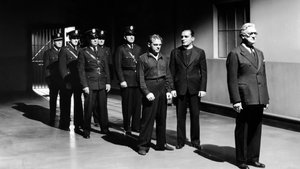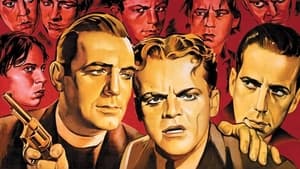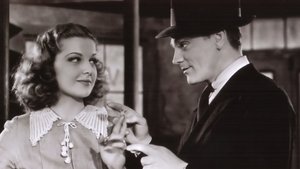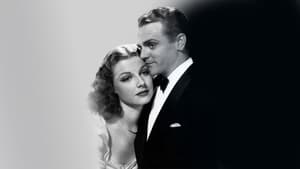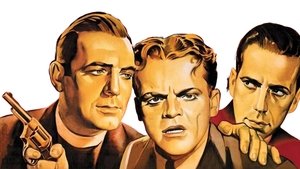Video Sources 0 Views
- Watch trailer
- Angels with Dirty Faces 1938 Colorized

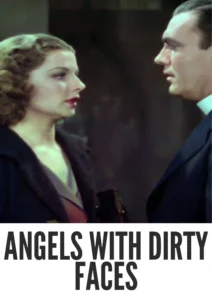
Synopsis
Table of Contents
ToggleStreet Kids, Priests, and Gangsters: Angels with Dirty Faces (1938) in Vivid Color

Step into the gritty world of 1930s New York with Angels with Dirty Faces, a compelling gangster drama from 1938, now beautifully colorized for a modern audience. This iconic film, directed by Michael Curtiz, delivers a powerful story of crime, redemption, and the influence of role models on impressionable youth. Perfect for fans of classic cinema and those fascinated by the gangster genre, this HD download brings a timeless tale of moral conflict to life on your screen. Angels with Dirty Faces is also known under the title Angels with Dirty Faces: A Story of the Streets.
Angels with Dirty Faces Storyline: A Choice Between Good and Evil
Angels with Dirty Faces tells the story of Rocky Sullivan (James Cagney) and Jerry Connolly (Pat O’Brien), childhood friends who take different paths in life. Rocky becomes a notorious gangster, while Jerry becomes a Catholic priest dedicated to helping the underprivileged youth in their old neighborhood.As Rocky rises through the criminal ranks, he becomes an anti-hero figure to a group of adoring street kids. Concerned that Rocky’s influence will lead these boys down a path of crime, Jerry tries to steer them away from Rocky’s dangerous lifestyle. A tense battle of wills ensues between the priest and the gangster, as each man fights for the souls of the young boys. The film culminates in a gripping climax where Rocky is forced to make a choice that will determine his legacy and the future of the boys who idolize him. Ultimately, Angels with Dirty Faces is a thought-provoking exploration of morality, social responsibility, and the complex nature of heroism.
Movie Cast
The film boasts a stellar cast of actors who bring this powerful story to life:
- James Cagney as Rocky Sullivan
- Pat O’Brien as Jerry Connolly
- Humphrey Bogart as James Frazier
- Ann Sheridan as Laury Martin
- The Dead End Kids as themselves
Movie Genre
Angels with Dirty Faces falls into the genre of gangster drama, with strong elements of crime, social commentary, and moral conflict. Its realistic portrayal of urban life and complex characters make it a compelling and enduring film.
Historical Context: The Golden Age of Gangster Films
Released in 1938, Angels with Dirty Faces is a quintessential example of the gangster film genre that flourished during the Golden Age of Hollywood. The film reflects the social and economic anxieties of the Depression era, exploring themes of poverty, crime, and the struggle for survival. Angels with Dirty Faces not only solidified James Cagney’s status as a major star but also contributed to the cultural fascination with gangsters as both villains and anti-heroes.
Colorization Details
This colorized version of Angels with Dirty Faces has been carefully restored using advanced digital techniques, enhancing the visual impact while preserving the film’s original atmosphere of grit and realism. The colorization process involved meticulously analyzing the grayscale tones of the original black and white footage and assigning appropriate colors to each element. This painstaking process breathes new life into the characters and settings, making the story even more immersive for contemporary viewers. While the decision to colorize classic films can be debated, it offers a way to introduce these films to new audiences, ensuring their continued relevance and appreciation for future generations.
Technical Details
- Director: Michael Curtiz
- Screenplay: Rowland Brown (story), Warren Duff and Ben Markson (screenplay)
- Cinematography: Sol Polito
- Edited by: Owen Marks
- Production Company: Warner Bros.
- Distributed by: Warner Bros.
- Runtime: 97 minutes
Technical Specifications
- Download Format: MP4
- Resolution: HD (1080p)
- Compatibility: Compatible with most devices, including smartphones, tablets, computers, and smart TVs.
Reviews and Critical Reception
Angels with Dirty Faces (1938) is widely regarded as a classic of the gangster genre, praised for its compelling story, powerful performances, and social commentary. James Cagney’s portrayal of Rocky Sullivan is particularly iconic, earning him an Academy Award nomination. The film’s exploration of morality and the impact of role models continues to resonate with audiences today.
FAQs
- Q: What is Angels with Dirty Faces about?
- A: Angels with Dirty Faces is a gangster drama about a criminal whose influence on a group of young boys is challenged by his childhood friend, a Catholic priest.
- Q: Is Angels with Dirty Faces (1938) a well-known gangster film?
- A: Yes, Angels with Dirty Faces is considered a classic of the genre, known for its iconic performances and social commentary.
- Q: Is this version of Angels with Dirty Faces colorized?
- A: Yes, this version has been professionally colorized to enhance the viewing experience.
- Q: What makes Angels with Dirty Faces interesting for film fans?
- A: Angels with Dirty Faces offers a compelling exploration of morality, social responsibility, and the complexities of heroism, set against the backdrop of the gangster era.
- Q: What is the download format?
- A: The download format is MP4, which is compatible with most devices.
- Q: What resolution is the download?
- A: The resolution is HD (1080p), providing a high-quality viewing experience.
Download Now in HD!
Watch Angels with Dirty Faces Today!

